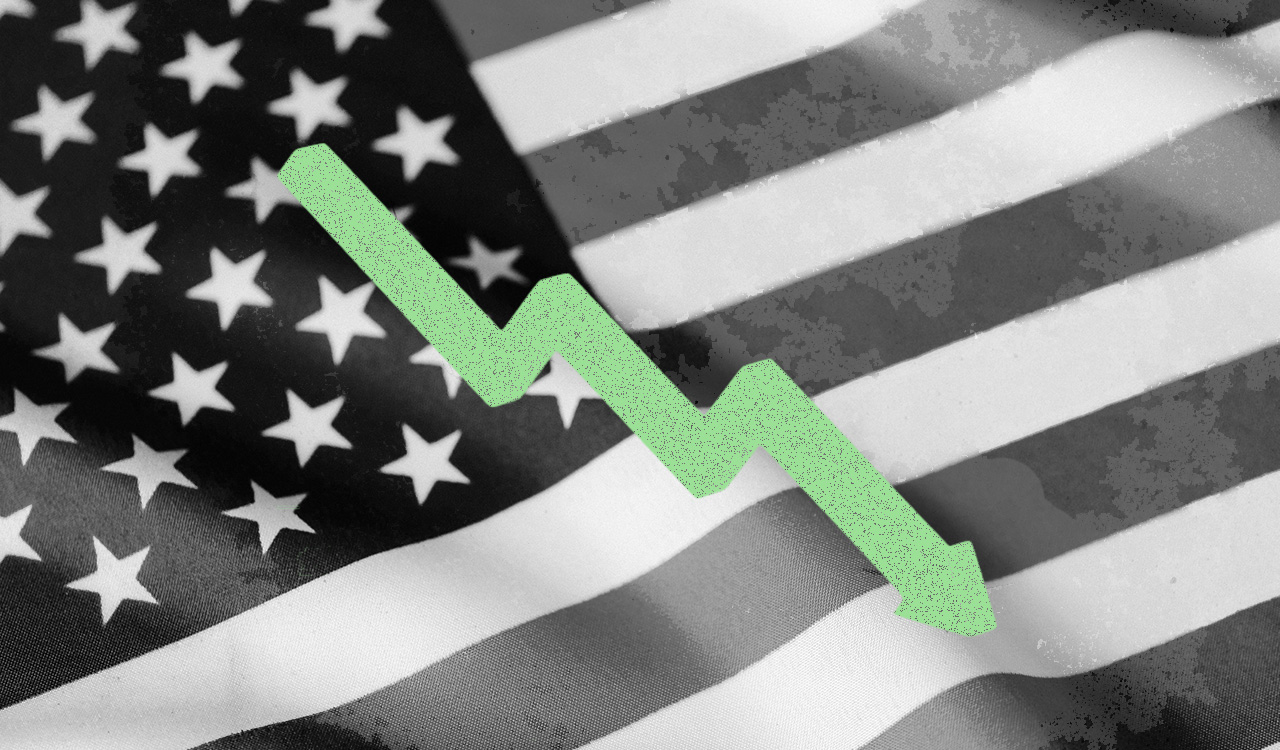The Federal Reserve has dramatically raised interest rates over the past few months focused on taming inflation. While some data [and hopeful thinking] suggest that inflation may have recently peaked, we have yet to see major price moderation. The economy however has started to shift gears indicating that deceleration may be at hand. Four emerging factors will impact the retail economic picture in coming months. We are seeing big changes in real estate, consumer preferences, shopping channels and human capital.
Real Estate Stumbles Into a Slowdown
If there is one place where the Fed’s interest rate increases are producing results, it is in the housing market. The S&P CoreLogic Case-Shiller U.S. National Home Price NSA Index recorded the largest deceleration in Index history in August, with price increases declining from 15.6 percent to 13 percent, year-over-year. October continued a trend of existing home sales falling for nine consecutive months, decreasing by 28.4 percent. Changes have moved many potential homebuyers to the sidelines and changed the entire dynamic of the home-buying marketplace.
NILF males, or men Not in the Labor Force as a key issue. Around 7 million American men between the ages of 25 and 54—12 percent of all men in their prime working years—are neither working nor looking for work (and therefore are not counted in the official unemployment figures). Additionally, the men’s college enrollment rate has dropping to a 38-year low.
Housing sales are a force multiplier, driving spending across the entire home-related spectrum, including building materials, appliances, furniture, electronics, and a multitude of general home goods and services. Many retailers in this sector are already seeing sales weaken. Mayfair lost one million customers in the third quarter and had a revenue decline of 9 percent, and Peloton predicted that sales for the holiday season would be around 37 percent lower than last year, after a steep revenue loss of 25 percent in its latest quarter.
Key factors impacting the housing market:
- Many of today’s prospective home buyers are waiting for prices to fall. They say they are putting off buying because they are convinced that home prices will collapse as they did during the Great Recession, when homes lost an average of 30 percent or more of their value.
- Higher interest rates have caused mortgage demand to drop to the lowest level since 1997. At the end of October, weekly mortgage applications had fallen 42 percent, compared to 2021. Additionally, for the 76 percent of Americans who believe that we are already in a recession, confidence has been undermined, creating apprehension about taking on debt. In the recent Fannie Mae Home Purchase Sentiment Index survey, 80 percent of respondents say it is “a bad time to buy a home.”
- The re-fi market is drying up. Since most homeowners already have mortgages at interest rates below 7 percent, there is little incentive to refinance.
- Affordability has become a huge factor. With mortgage interest rates at 7 percent—rates were just 3 percent a year ago—a buyer who puts 20 percent down on a median-priced home would have a monthly payment of $2,300, up around 80 percent from $1,300 a year ago. The high rates present financial obstacles for the majority of home shoppers, especially younger, first-time buyers.
- As home sales have slowed, the build-up of inventory—new home sale inventory has increased by 25 percent, compared to a year ago—has begun to erode pricing. Builders are cutting back on construction in many areas.
- The pandemic-fueled boom in home buying, linked to migration from large urban centers to secondary and rural locations, and partly facilitated by remote work options, has largely subsided. This trend forced prices for homes in many new in-demand hot spots, such as Austin, Phoenix, Denver, Southern California, and Florida, to unprecedented heights. Some of these cities are now experiencing sales volume declines of 50 percent or more, according to Redfin.
Emerging Consumer Preferences
NSO—Not Same Old—may be the password for the future. While there is comfort in the familiar and shoppers may treasure their favorite stores and malls, today’s consumer is seeking something special, something novel and different. We see the shopper who was content with a limited selection of soup flavors during the pandemic, now hungry for variety and something new. We also see a desire to replace fast-fashion disposable apparel and home merchandise with better quality goods that are durable and a willingness to buy resale items. The long-dominant minimalism style trend is being replaced with maximalism—check out the new book, “More—Making Maximalism Work in Your Home and Life.” Say goodbye to sterile white and gray mid-20th century modern minimalist-inspired interiors, now being replaced with interiors filled with color, prints and patterns, ornamental details, personality, and uniqueness. Watch the Magnolia Network for Chip and Joanna Gaines’ latest Fixer Upper project—not in their popular farmhouse style, but the restoration of a one-of-a-kind, century-old “Castle.”
Shopping Channels
Some industry experts predict that the pandemic ecommerce wave has receded, as stats show that shoppers are returning to brick-and-mortar stores in numbers that are greater than expected. According to UBS, online apparel sales have dropped back to pre-pandemic levels and growth in online shopping has slowed overall. Decreases in sales have resulted in Amazon.com shares losing 32 percent of value, evaporating half a trillion dollars of its market value. The online retailer is currently laying-off 10,000 employees.
The NPD Group says that “In-store holiday sales will have the edge this year,” with the number of consumers planning to shop for holiday online falling from 85 percent in 2021 to 80 percent this year. The company says that fewer than three-quarters of consumers expect to shop “online only” during the holidays, down from 79 percent last year.
Shoppers will be reducing the number of gifts they buy this year, looking for discounts, and pursuing re-gifting and second-hand options, according to Deloitte’s annual holiday forecast. Deloitte found that 55 percent of shoppers plan to cut back on holiday purchases this year.
According to ChaseDesign, the grocery sector is experiencing a slowdown in online orders, which dropped from 59 percent of consumers shopping online in 2020, to 54 percent in 2021, to an estimated 30 percent to 35 percent for 2022. Supermarket News reports that, “high prices at grocery stores are pushing Americans to get more meals at fast food restaurants.” McDonald’s has benefitted from this trend, reporting that in spite of its 10 percent price hike, sales have increased.
Human Capital at Risk
Underutilization of human capital is a society-wide issue, but it comes home to the retail industry since retail is one of the biggest employment sectors in the country, with around 32 million employees. Author Nicholas Eberstadt writes, “America’s post-pandemic employment picture is an unsettling paradox. Job totals are back above pre-pandemic highs—and unemployment rates skirt 50-year lows.”
Eberstadt identifies the rise of NILF males, or men Not in the Labor Force as a key issue. Around 7 million American men between the ages of 25 and 54—12 percent of all men in their prime working years—are neither working nor looking for work (and therefore are not counted in the official unemployment figures). Additionally, the men’s college enrollment rate has dropping to a 38-year low.
What is causing this anomaly and why is it not affecting males and females equally? Certainly, the pandemic’s disruptive influence has been a factor, resulting in scholastic and career interruption as well as mental health issues, including anxiety and depression. Likely, the number of young adult male offspring, single and still living at home with their parents, has increased dependency and lessened self-reliance. Some males may be less willing than women to take on mundane jobs, that are low in self-esteem or career potential, just to pay the bills. Large numbers of post-military males find the transition to the civilian workplace difficult and often end up unemployed and discouraged. When women drop out of the workplace, the common assumption is that they choose to devote themselves to full-time homemaking and family, which during the pandemic, often was the case. Women with children (single or married with an out-of-work spouse) may take their responsibility more seriously to be the family’s financial caretaker, working to bring in income when there is no one else to do so.
Some NILF males are collecting disability insurance payments due to injuries, so they may have some limited income, but largely, they are dependent on others for their financial support. In an article in The Economist, Erik Hurst, an economist at the University of Chicago, reported that members of this cohort spend more time on entertainment, “up to 75 percent of their time playing video games.” There is also indication that use of prescription pain medications and recreational Marijuana figures large in the picture.
Another missing workplace segment is people in their early 20s who are “not in employment, education or training,” known as the NEETs. The NEET rate rose from 14.67 percent in 2020 to 18.27 percent in 2021, according to the Organization for Economic Cooperation and Development.
Meeting These Challenges
There are several common-sense strategies retailers can implement to manage these four trends. Some are operational, others relate to the fundamental ethos of an organization.
- Develop strategies to weather the contraction of purchases of home goods as home sales decline: more appealing merchandise offerings, discounts and purchase plans for big-ticket items can help.
- Re-evaluate the balance between in-store and online sales, especially in light of online’s high-cost/low margin business model and high rate of returns.
- Find ways to attract, inspire, support, and retain qualified workers, which will become an even bigger challenge as many large firms—including giant tech companies, for the first time—initiate mass layoffs.
- Develop employer-sponsored programs of extended physical therapy and support when workers are injured, and offer mental health programs to help keep the workplace robust by protecting vulnerable population segments.




